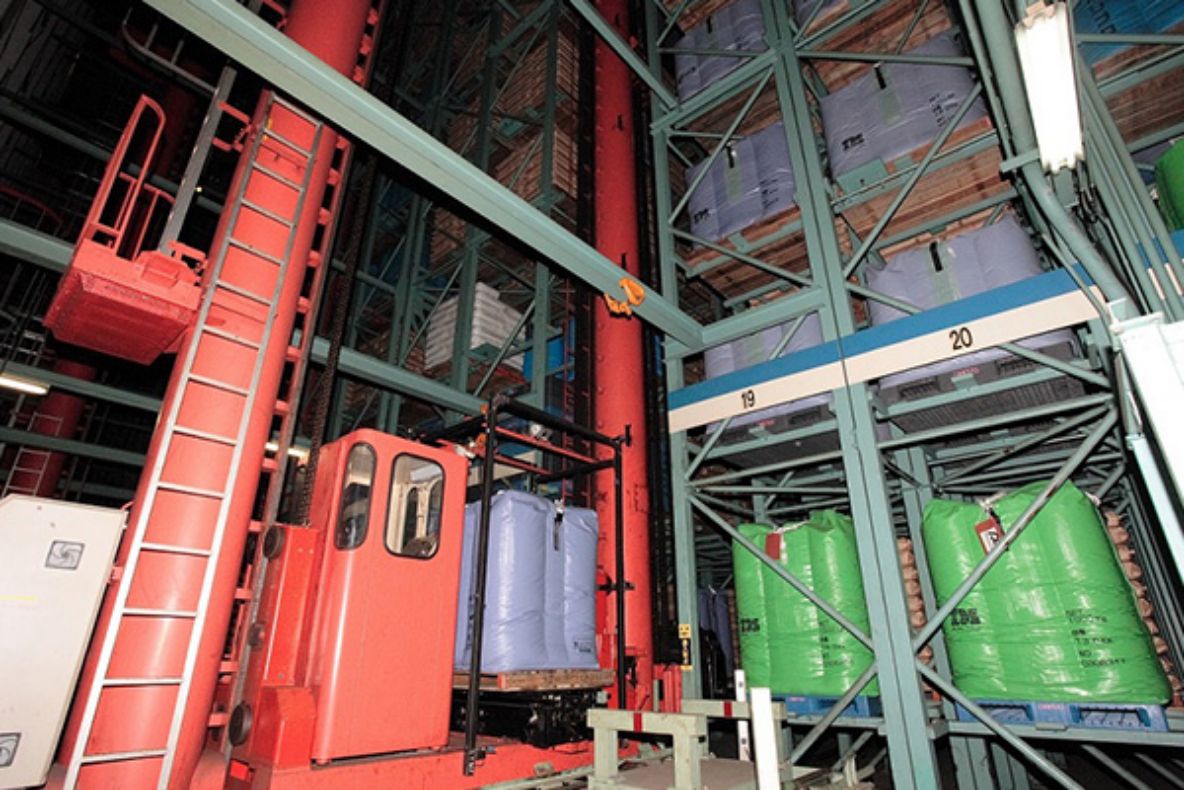
Environment
Reduction of LCCO2 emissions
Compared to conventional construction methods, membrane buildings can significantly reduce LCCO2 emissions throughout the construction, operation, and demolition phases, contributing to sustainability. In particular, the reduction of interior lighting through solar transparency of the tent roof can also reduce running costs.
In addition, the lightweight frame makes it easy to make large openings and saves power consumption by eliminating the need for lighting during the daytime.
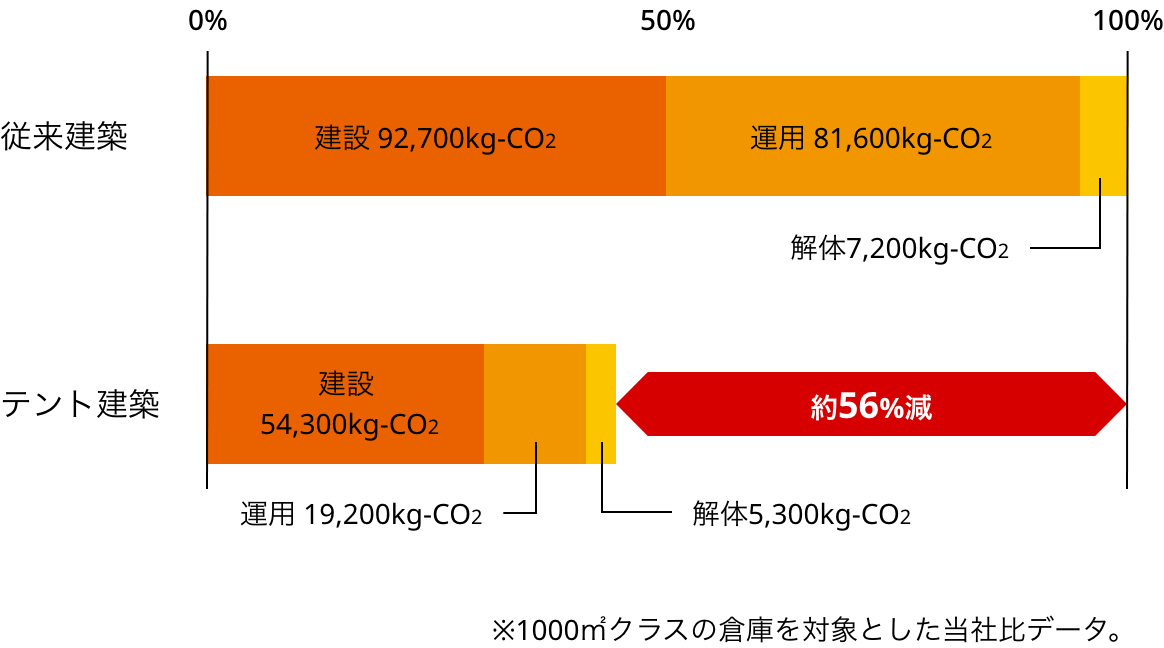
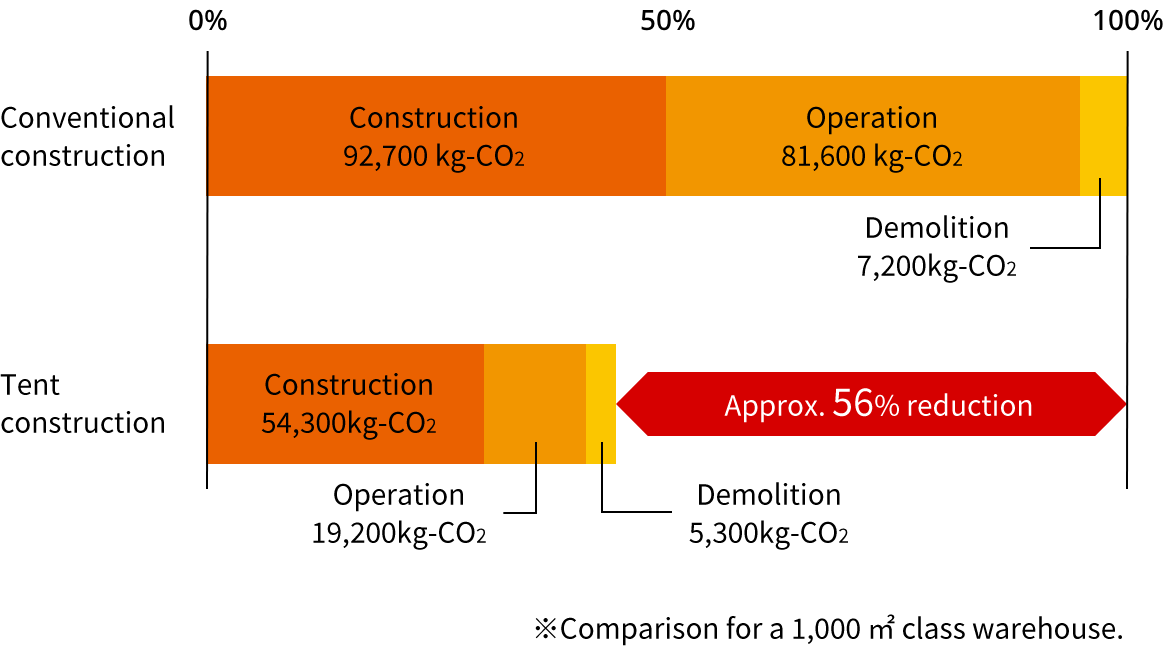
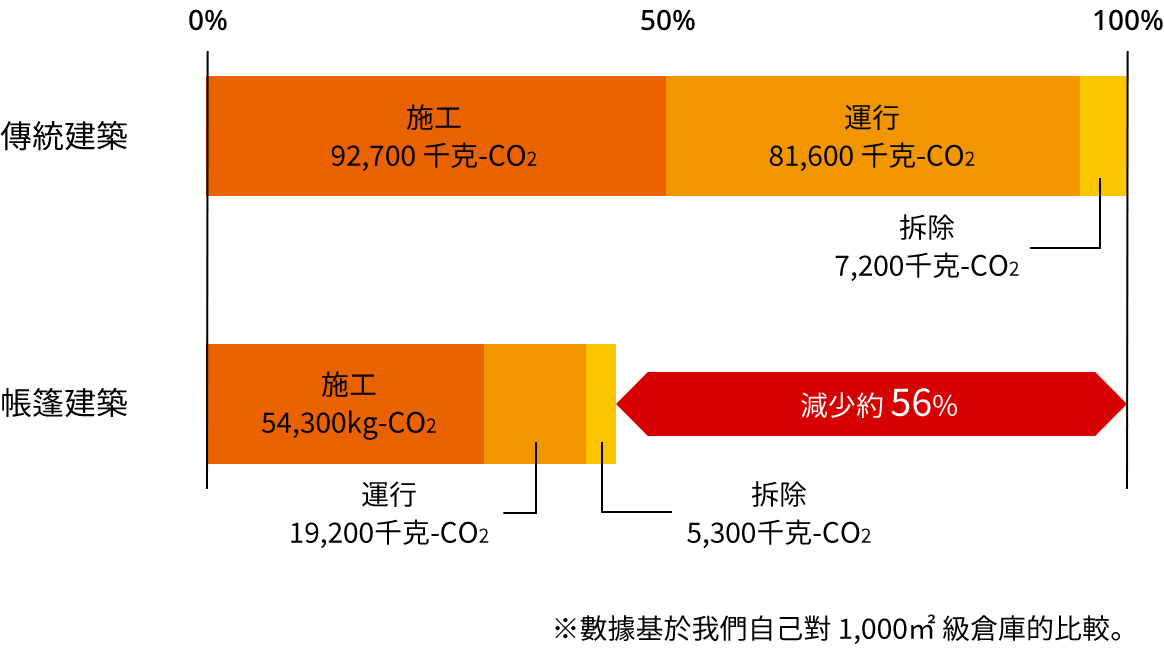
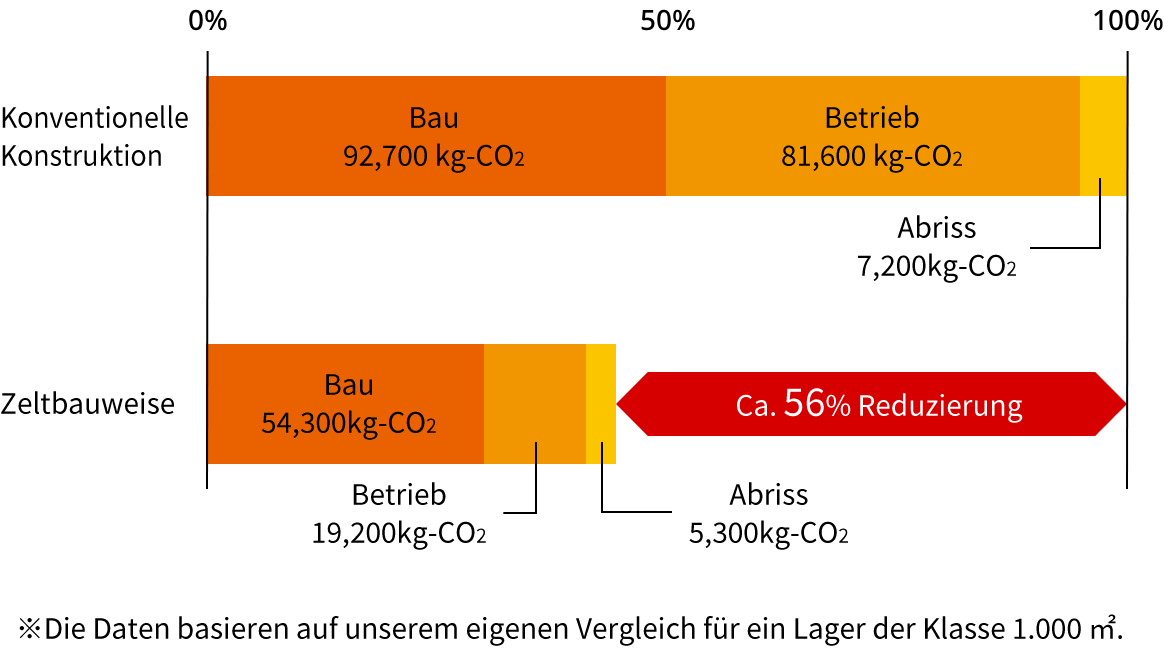
Heat island control
White membrane roofing is a building material with high solar reflectance and low heat storage.
Measurements of temperatures experienced by different roofing materials on a station platform during the summer showed that compared to metal and slate roofing materials, membrane roofs provide a 1.5°C cooler experience than metal roofs and a 3.5°C cooler experience than slate roofs. Furthermore, with a maximum illumination of 16,000 lx, much brighter than metal and slate roofs, membrane roofs provide a brighter and cooler environment.
membrane roof
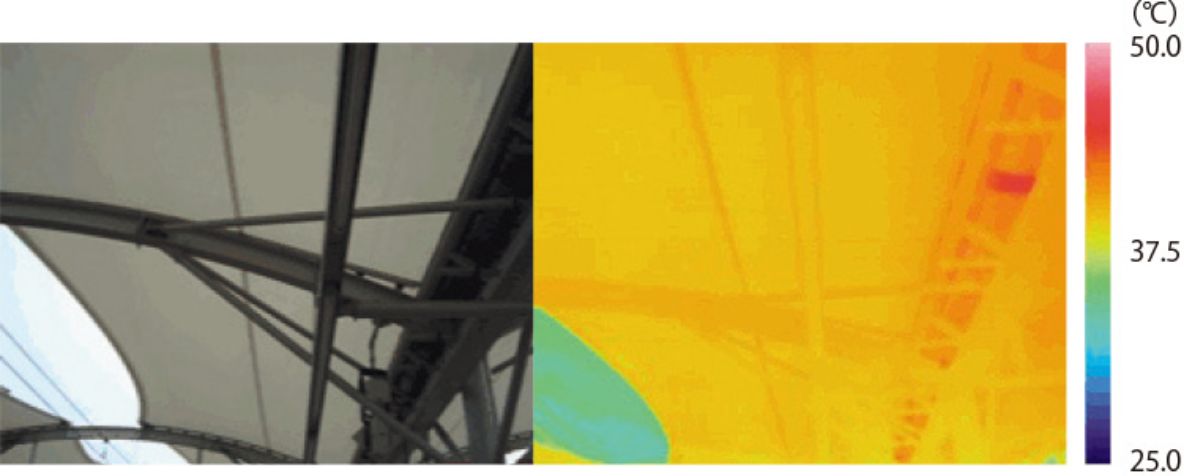
気温:35℃/屋根裏面温度:40℃
平均放射温度{MRT}:37℃/体感温度{作用温度OT}:36℃
最大照度:16,000lx
metal roof
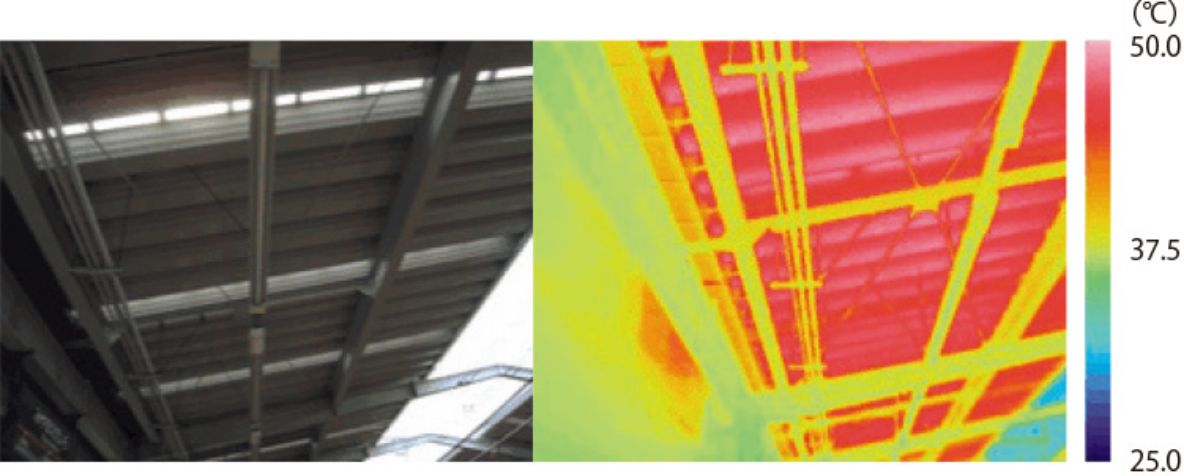
気温:35℃/屋根裏面温度:40℃
平均放射温度{MRT}:37℃/体感温度{作用温度OT}:36℃
最大照度:16,000lx
slate roof
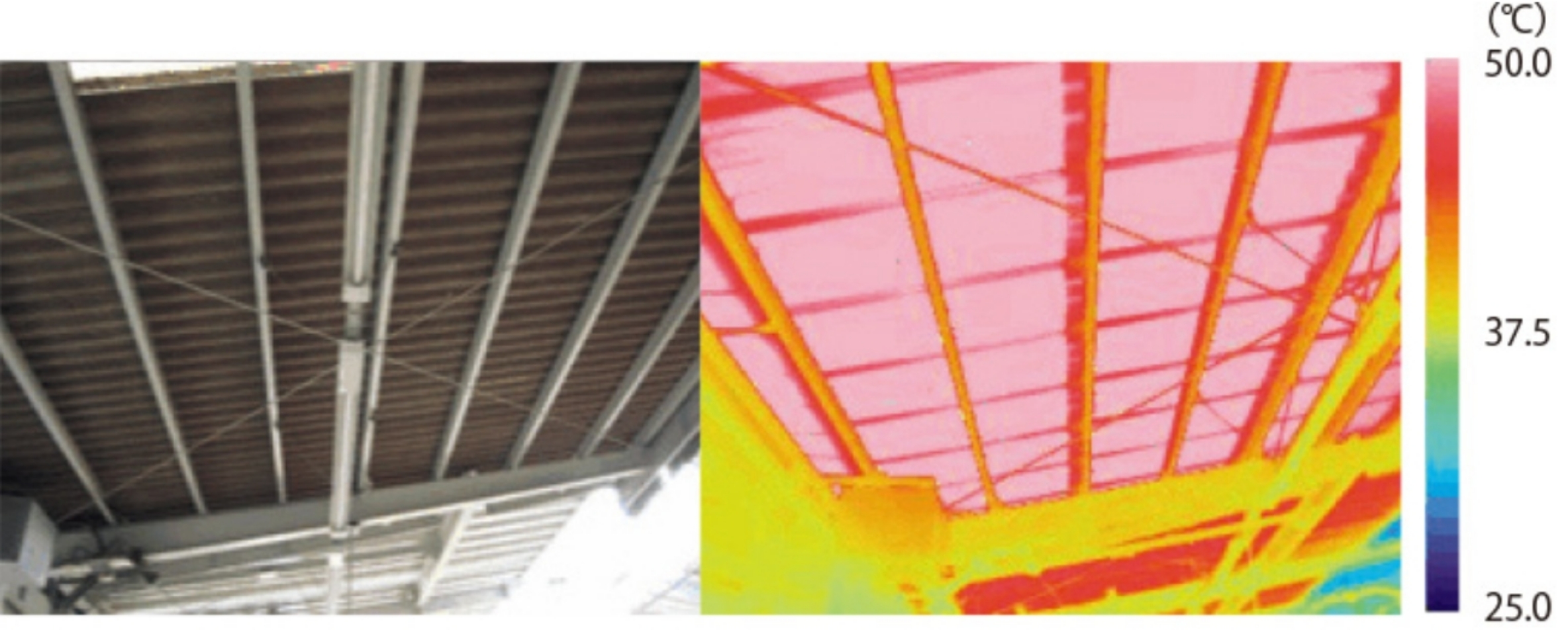
気温:37℃/屋根裏面温度:55℃
平均放射温度{MRT}:42℃/体感温度{作用温度OT}:39.5℃
最大照度:2,400lx
Photocatalytic tents
We use photocatalytic tents in our membrane structure buildings, which have a "self-cleaning" function that cleans itself with the power of sunlight and rain, even if it gets dirty.
It also ensures high light transmittance and makes the interior of the space more comfortable by reducing the rise in room temperature. As a result, air conditioning efficiency is increased, which contributes to lower running costs, energy savings, and environmental issues. At the same time, it also cuts harmful ultraviolet rays by more than 98%, thereby preventing quality deterioration due to high temperatures and color degradation due to ultraviolet rays. In addition, while there is concern about the environmental impact of nitrogen oxides (NOx), which are contained in exhaust gases and cause air pollution, photocatalytic tents are attracting attention for their ability to remove nitrogen oxides (NOx) and purify the air.
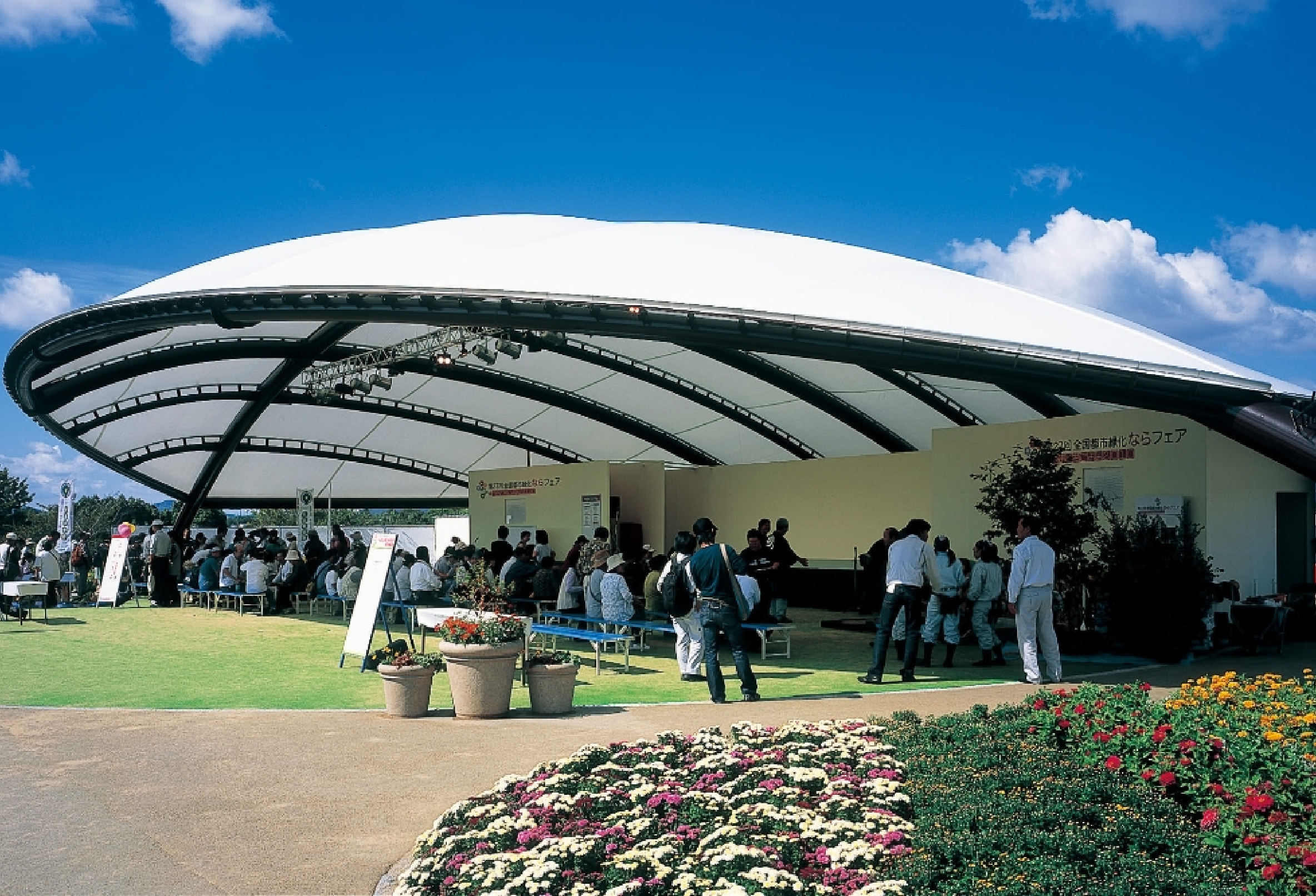
Pollution Control Membrane Silt Protector
Polluted water from sludge and silt that spreads during port and other water area construction is a major obstacle to environmental preservation. Silt Protector," the anti-pollution membrane developed to prevent the outflow of such pollution, contributes to environmental protection, controls the inflow of harmful substances, and maintains water quality, thereby protecting ecosystems and coastal areas. This protects ecosystems and coastal areas. Silt Protector can be used in a wide range of installation conditions, from calm waters to rough seas, and has a proven track record.
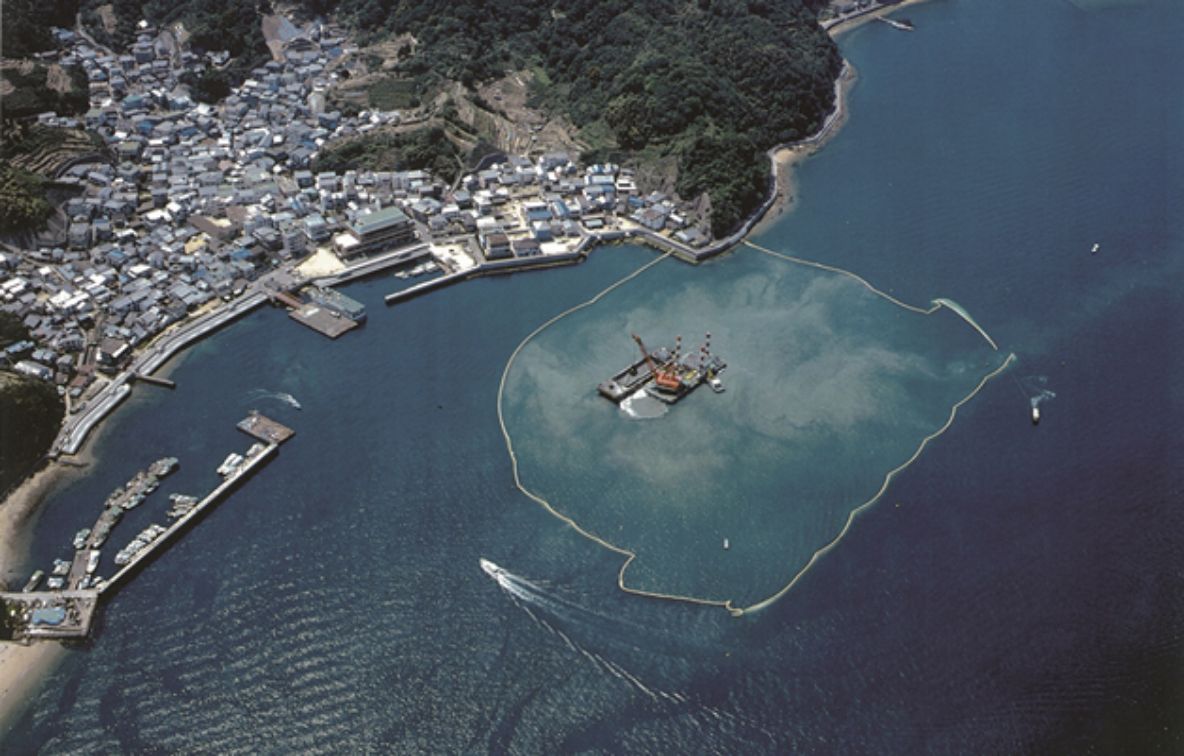
Flexible Container Bag
Flexible container bags are lightweight, reusable, and efficient in transportation. This reduces energy consumption for transportation and waste. The use of renewable materials and product protection make it an environmentally friendly logistics solution that contributes to the effective use of resources and waste reduction.
